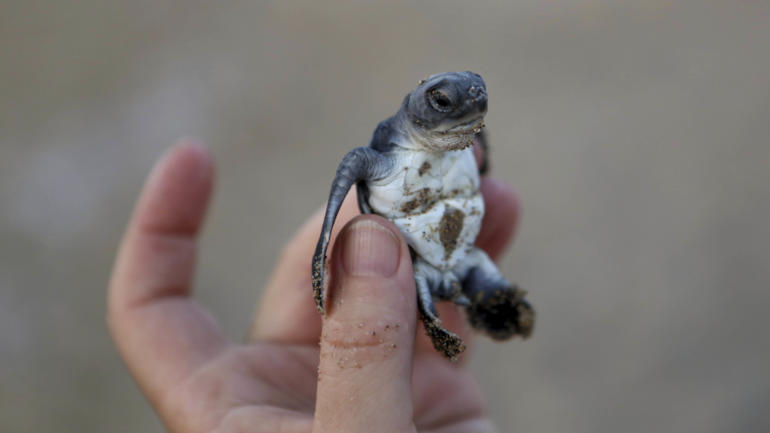Plastic pollution in marine environments is a growing concern around the world and now scientists from the Commonwealth Scientific and Industrial Research Organisation (CSIRO), say that baby turtles are at increased risk of dying from ingested plastic.
Researchers looked at the results of 246 sea turtle autopsies and an additional 706 records on file and found that 23% of juvenile and 54% of post-hatchling turtles had ingested plastic compared to 15% of sub-adult and 16% of adult turtles.
They say that amounts of larger plastic waste tend to be found around offshore waters where young turtles tend to feed.
The plastic can build up in the turtle’s digestive system and may cause death.
The team says that the best model of the relationship between the risk of death to turtles from plastic ingestion and the amount of plastic which the animal had ingested, took into account the amount of plastic it had ingested in relation to the size of the shell and age of the turtle.
In the Kenyan coastal town of Lamu, various community-led organisations have come together to help save the reptiles.
Five of the seven species of sea turtles can be found in the waters off Kenya, the Green Turtle, Hawksbill, Loggerhead, Leather back and The Olive Ridley turtles. These reptiles migrate through the delicate marine ecosystem waters as they forage along the Kenyan coast. Sea turtle habitats consist of nesting beaches, coastal and neritic areas (the shallow part of the sea near a coast).
Some of the factors that cause a decline in turtle population in Kenya are climate change, hunting, boat accidents, fishing net deaths and destruction of their nesting grounds.
The Coastal Kenya Programme, WWF aims to educate local people to stop turtle poaching and reduce plastic pollution near the turtles’ habitat.
Global currents deposit marine debris from all over the world on Lamu’s beaches.
Plastic labels found here indicate their began their journey as far away as Yemen and Indonesia.
The WWF say that if turtles eat plastic it causes them pain, they stop eating and they starve to death.
Another problem is that ingesting plastics increases their buoyancy says WWF, which prevents adult turtles from diving deep into their natural habitats in search of food.
Hassan Mohammed is a marine project officer at World Wildlife Fund Kenya,
“Turtles sometimes confuse plastics for food. They think that plastics are jellyfish. So when they eat the plastics, it gets into their stomachs and causes death. Moreover, when there are a lot plastics around hatching sites, turtles are not able to lay eggs. When baby turtles are hatched, they are unable to reach the ocean due to too many plastics that get in their way and thus blocking them.”
According to WWF, only one turtle grows into adulthood out of every 1000 turtles hatched. Baby turtles face a treacherous journey to to sea with many falling prey to predators that include crabs, birds, poachers, snakes and monitor lizards.
The Lamu Marine Conservation Trust promotes turtle conservation through education, turtle nest protection, beach clean ups, tagging and releasing turtles caught in fishing nets.
They compensate fishermen who hand over turtles they have caught in their nets so they can rehabilitated, tagged and released back into the oceans.
“Up to date, we have released 1,000 adult turtles and 90,000 juvenile turtles,” says Atwaa Salim, director of Lamu Marine Conservation Trust.
They have also helped five former poachers turn game keeper, training them to patrol beaches and protect the nest sites.
Former poacher Mohammed Munu explains that turtle oil is believed to help certain medical conditions.
” We were using various turtle parts. Mostly, turtle oil was used to treat eczema in children or tuberculosis in adults. We used to give out the oil in table spoons. One spoon full in the night and another in the morning and another during the day. This enabled us to cure patients.”
Now thanks to community efforts and scientific research thousands of turtles are finding their way back home.
Story by AFP.
 CGTN America
CGTN America In this photo taken on Thursday, Aug. 9, 2018, a conservationist holds up a tiny sea turtle that just hatched from its nest on Cyprus’ protected Lara beach. (AP Photo/Petros Karadjias)
In this photo taken on Thursday, Aug. 9, 2018, a conservationist holds up a tiny sea turtle that just hatched from its nest on Cyprus’ protected Lara beach. (AP Photo/Petros Karadjias)
